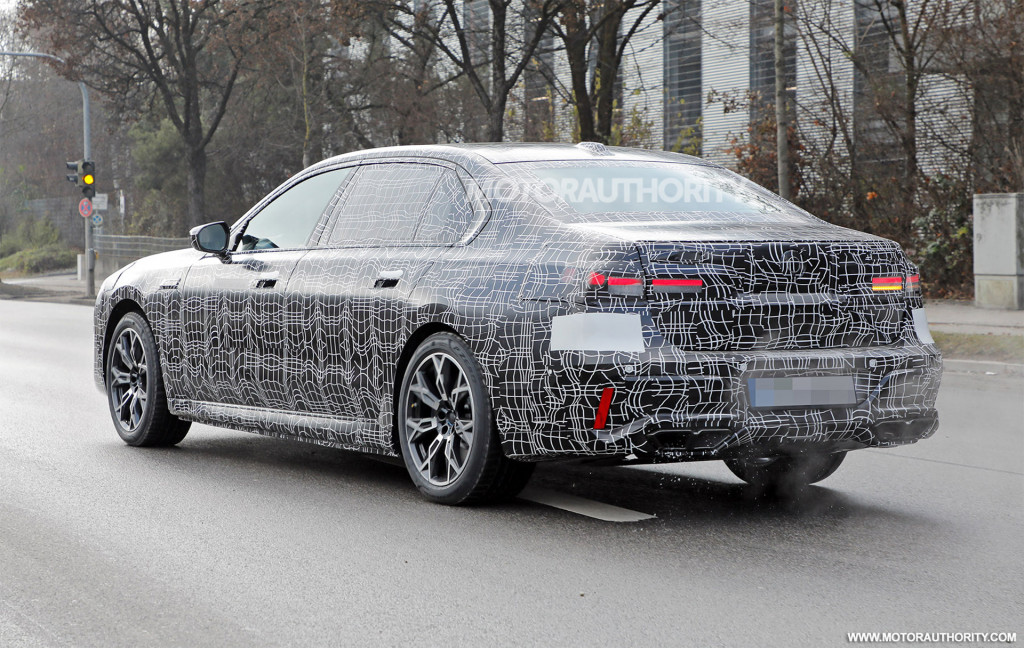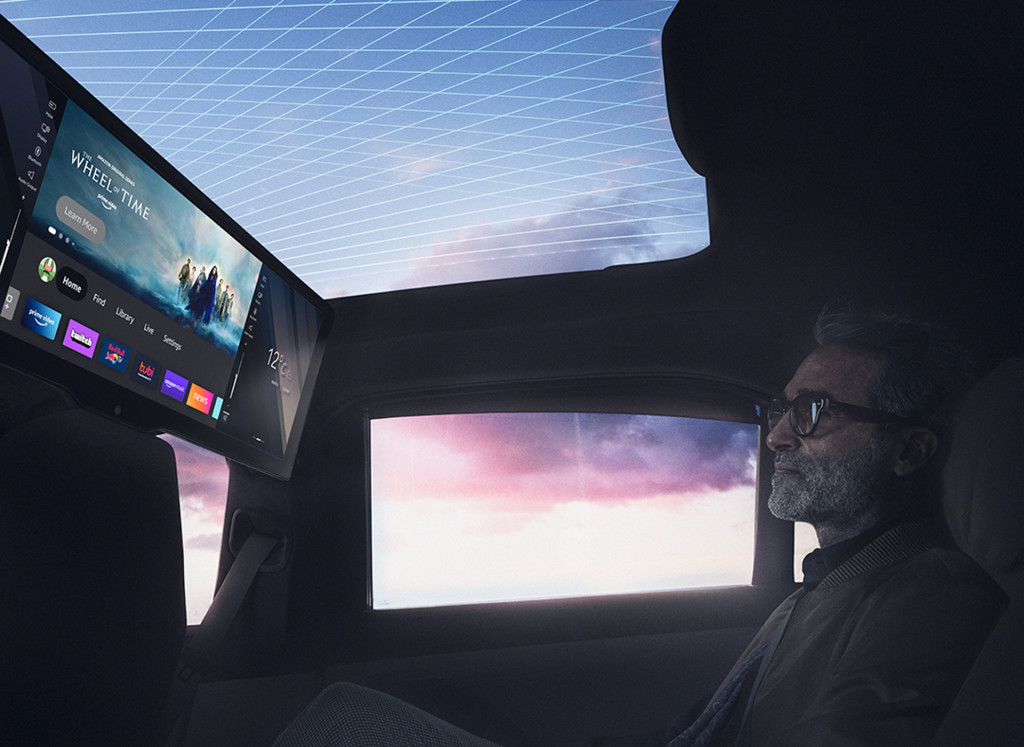BMW is almost ready to show us its redesigned 7-Series, and to help build the excitement the automaker has released a few new teaser photos and provided an update on the debut.
The new flagship sedan will be revealed online on April 20, and will no longer debut at Auto China 2022, which was to run from April 21-30 in Beijing but has been postponed due to Covid-19 restrictions. Expect the new 7-Series to reach showrooms later in 2022 as a 2023 model.
The teasers reveal a distinct look for the 7-Series, with the front dominated by a large grille whose surround is illuminated. There will also be dual-element headlights, with the daytime running lights being formed by slit-like elements running along the leading edge of the hood. The look was first previewed last fall on BMW’s Concept XM and has since appeared on the updated 2023 BMW X7.

2023 BMW 7-Series spy shots – Photo credit: S. Baldauf/SB-Medien

2023 BMW 7-Series spy shots – Photo credit: S. Baldauf/SB-Medien
The interior of the new 7-Series will follow a more luxurious route than past generations, with the teasers revealing some jewel-like detailing for the cabin. There will also be multiple screens, one of which will be a 31-inch screen with 8k resolution that descends from the roof to provide a theater-like experience for rear-seat passengers. Gesture control will also feature, alongside voice activation and physical controls. BMW also hired popular Hollywood composer Hans Zimmer to craft some of the sounds for the new 7-Series’ cabin.
The new 7-Series is based on an updated version of the current 7-Series’ CLAR platform, with the latest version capable of supporting multiple powertrain types. Yes, there will be an electric i7 variant, which will be the most powerful variant thanks to an output of more than 600 hp, and also come with a Zimmer-composed soundtrack. BMW estimates a 305-mile range for the i7 on the EPA cycle. Sadly, a V-12 option won’t be on the menu.
There will also be Level 3 self-driving capability in markets that allow the technology. Level 3 is a reference to the SAE scale of self-driving capability. It means a car that can handle itself in set conditions, enabling the driver to let go of the steering wheel and even look away from the road briefly. However, it still requires the driver to be ready to take back control at a moment’s notice.

Teaser for 2023 BMW 7-Series (i7) debuting on April 20, 2022
A more advanced Level 4 car can also handle itself in set conditions but will allow the driver to look away for long periods, potentially enabling a driver to sleep behind the wheel. This is because a Level 4 car can come to a safe stop if the driver fails to take back control when required. A Level 4 car can even operate without a driver within its set conditions, for example within a geofenced area. This is the level Waymo’s self-driving taxis operate at. The ultimate goal is a Level 5 car. This is a car that can operate to the same ability as a human.
BMW has developed its self-driving system with Intel’s Mobileye division. The system will also be offered eventually on the 5-Series, X5 and X7, and as an update on the recently launched iX. The system is expected to be designed for highway driving.
“The new BMW7-Series is absolutely trailblazing in every respect,” Frank Weber, BMW’s R&D chief said in a statement. “Like no other model, the BMW 7-Series stands for BMW’s innovative strength.”